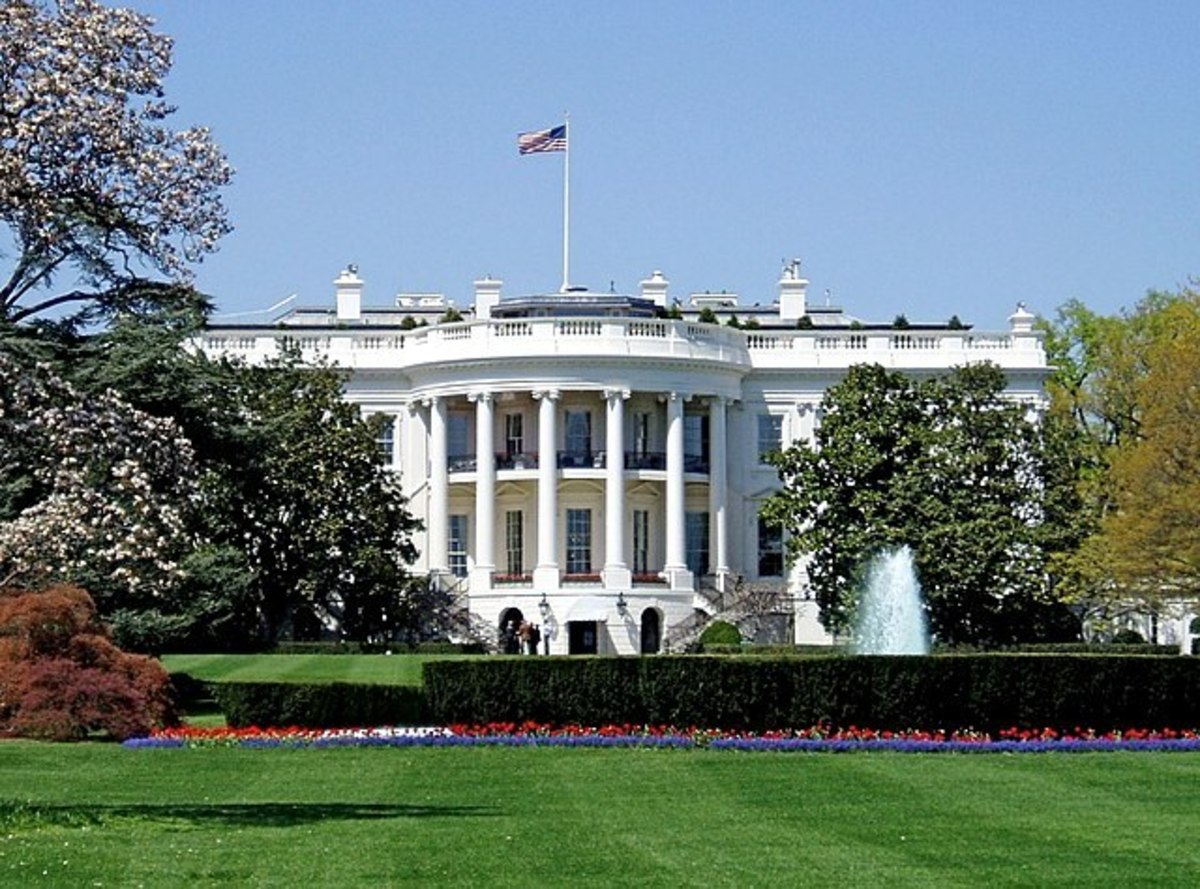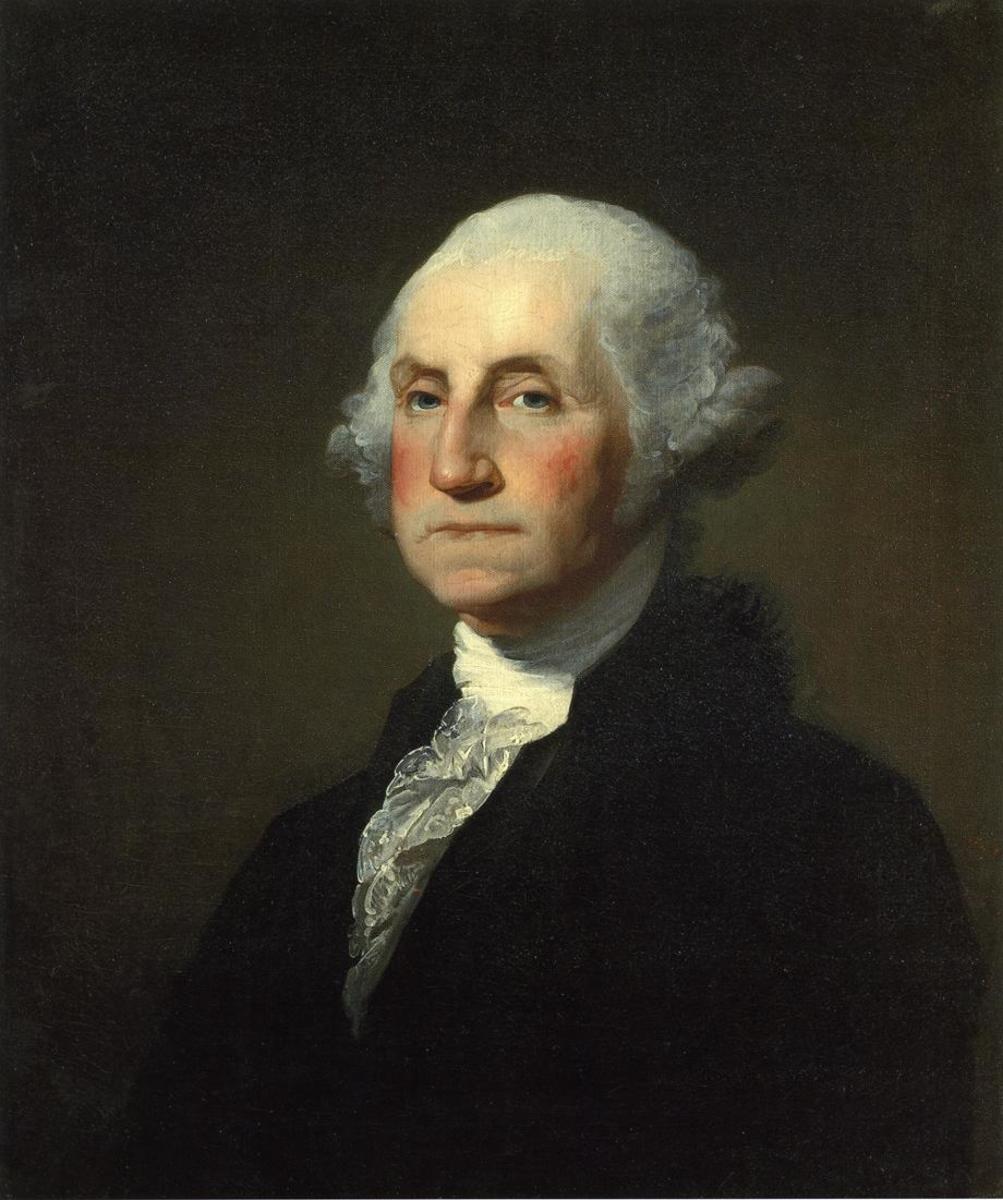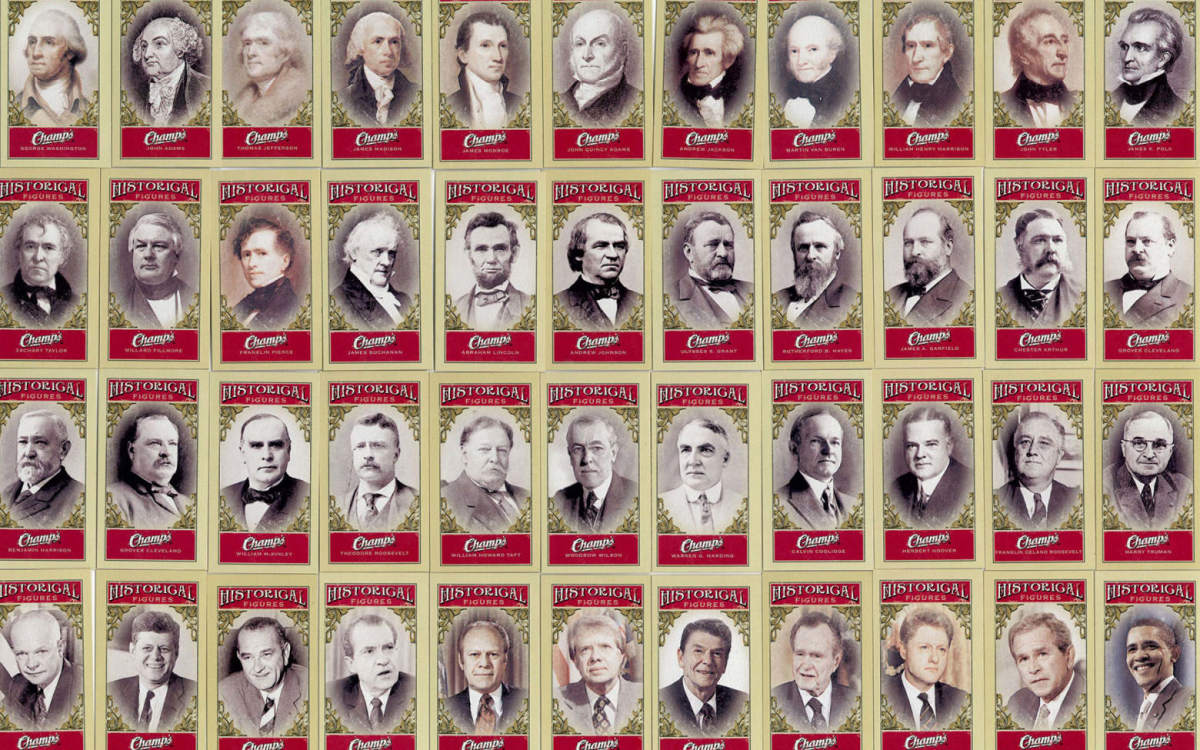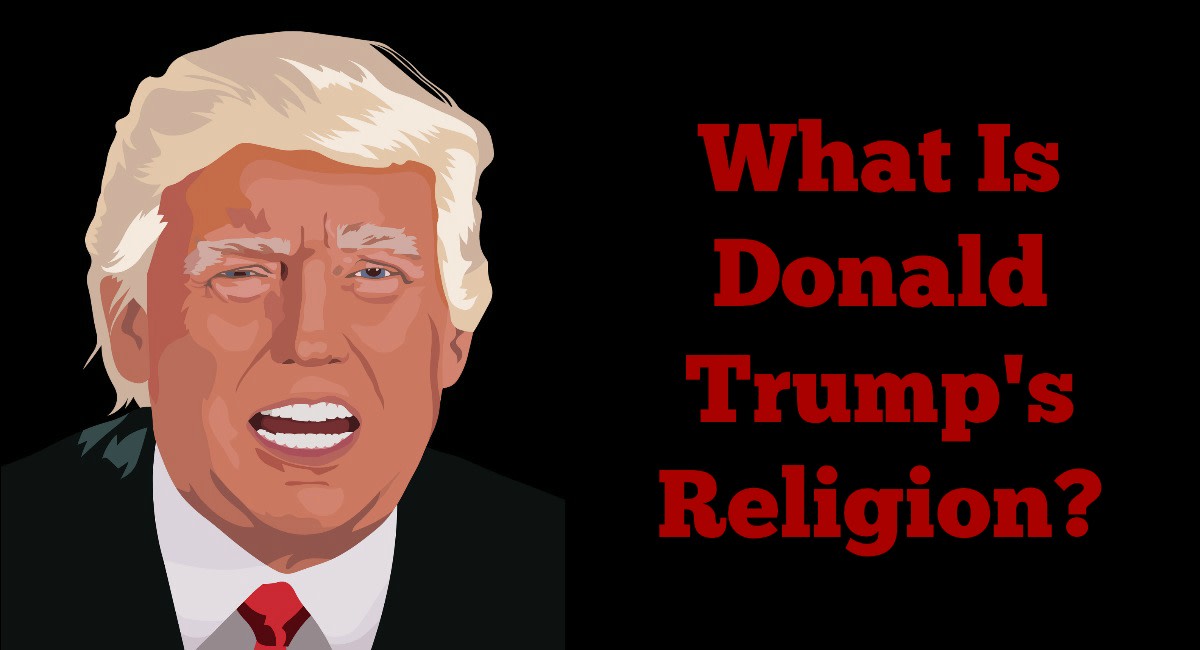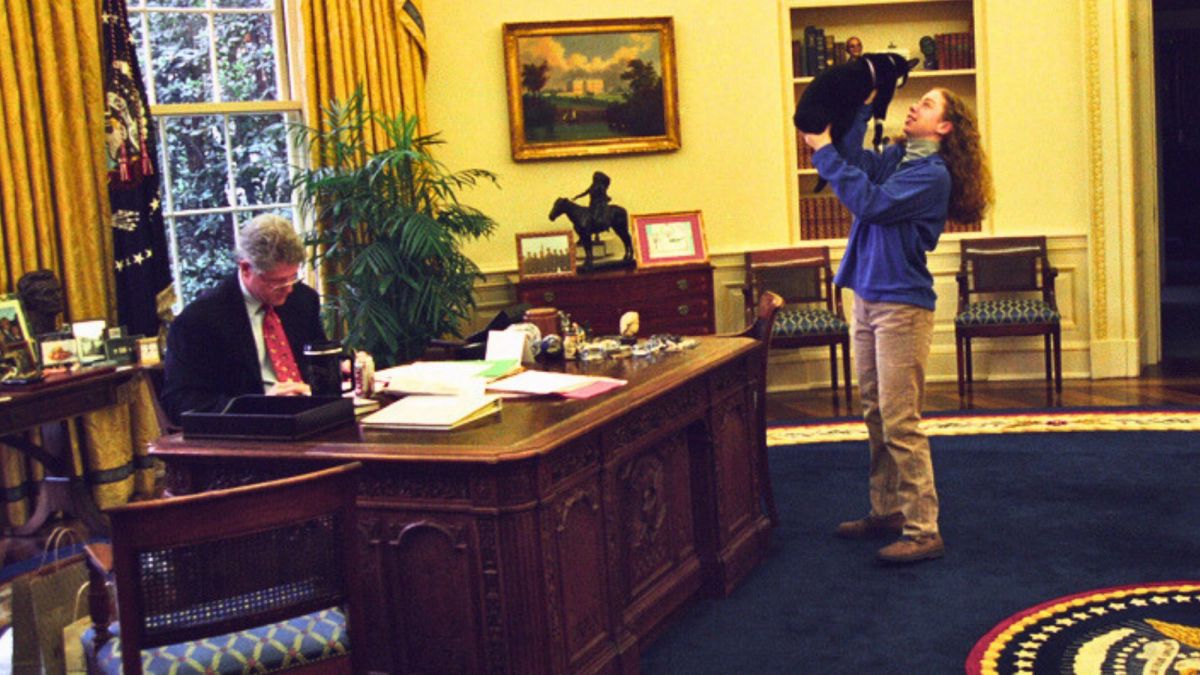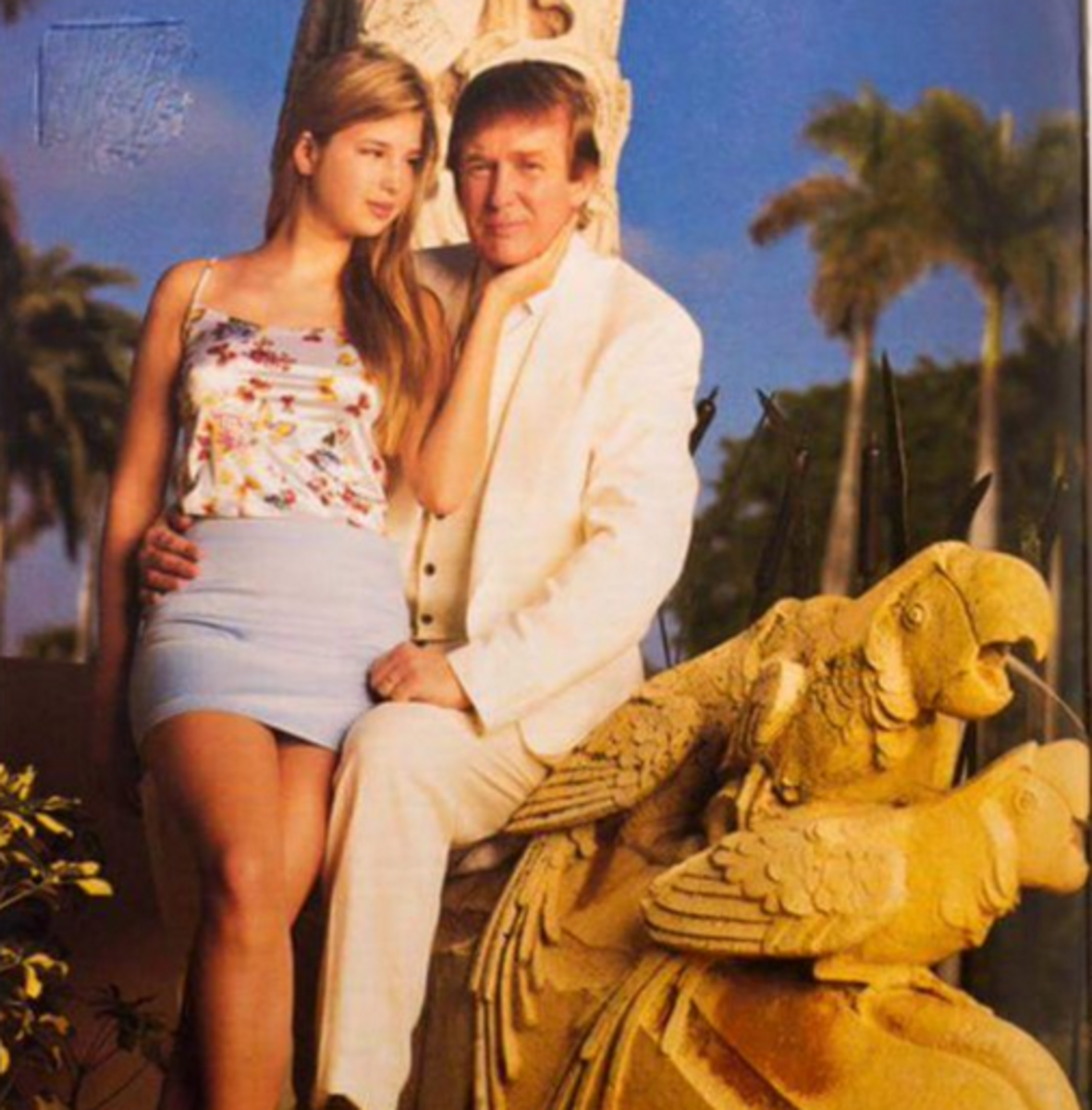Homes of the U.S. Presidents, Part 3: Pre-Civil War
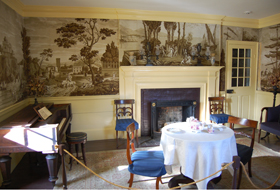
The Obscure Presidents of Pre-Civil War America
This is Part 3 of my on-going series on the homes and libraries of U.S. Presidents. Part 1 covers the Virginian Dynasty (Washington, Jefferson, Madison, Monroe). Part 1.5 covers the father-son presidents, John Adams & John Quincy Adams. Part 2 features the homes of the Jacksonian era presidents (Jackson, Van Buren, Harrison, Tyler, Polk). Part 4 is dedicated to the homes and historical sites of Abraham Lincoln, our 16th President.
These historical sites offer interesting, inexpensive side trips on the way to and from vacation destinations. From full-day visits to hour-long leg stretches, a visit to a presidential birthplace, family home, or library is an interesting, relaxing way to break up those long stretches of highway. You can learn quite a bit about the different presidents when touring their homes as well as a great deal about how different socio-economic classes of people lived during different time periods.
Part 3: Taylor to Buchanan
Between the Jacksonian era presidents and Abraham Lincoln fall a often-neglected group of presidents whose administrations were overwhelmed with sectional tensions, intricate political maneuvering, and desperate attempts to keep the Union together under their watches. One example of the political in-fighting is that none of this group of presidents served more than one term or was even renominated to run for re-election. Not easily placed in a political pigeon hole, this ideologically complex group is remembered mainly by middle school and high school students required to memorize the order of U.S. presidents.
Part 3 Presidential Homes consists of:
- Zachary Taylor: Springfield Farm & Gravesite, Louisville, Kentucky
- Millard Fillmore: Birthplace, Moravia, New York
Millard Fillmore Home, East Aurora, New York
Millard Fillmore Gravesite, Buffalo, New York - Franklin Pierce: Franklin Pierce Homestead, Birthplace, Hillsboro, New Hampshire
Pierce Manse, Concord, New Hampshire
Pierce Gravesite, Concord, New Hampshire - James Buchanan: Birthplace Memorial, Birthplace Log Cabin, Childhood Home, Mercersburg, Pennsylvania
Wheatland, Lancaster, Pennsylvania
Buchanan Gravesite: Lancaster, Pennsylvania
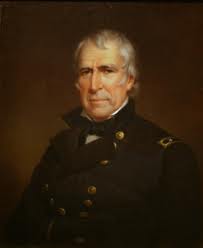
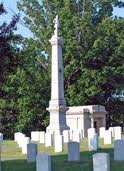

12. Zachary Taylor: Springfield
Where: Springfield, Louisville, KY
When: Private home, not opened to public. Gravesite is public.
Despite the fact that Taylor's home is private and not open for tours, I am including his biographical sketch and home history here simply because I want a complete series on the presidents. His grave site is open to the public and located on land that was once part of the family plantation and its burying grounds.
From birth, Zachary Taylor was a boy on the move. Having sold their plantation Hare Forest, in Orange County, Virginia, the Taylors set out for Kentucky in 1784. A case of the measles delayed them in Barboursville, Orange County, Virginia, where Zachary entered the world on Nov. 24, 1784. A historical marker stands in the place of the log building that was Taylor's birthplace.
Taylor was raised at Springfield, a plantation that his father expanded to 10,000 acres, outside of Louisville, Kentucky. About 1790, Taylor's father moved the family's log cabin to the back of the estate for use as slave quarters, having replaced it with a 2-1/2 story Georgia Colonial, built with bricks fired on site. Between 1810-20, the Taylors added a second half to the side of the house, resulting in a slightly asymmetrical home.
When he was 23, Taylor struck out on his own. Over the next 40 years, he continually re-enlisted in and resigned from the Army. He married Margaret Smith in 1810, in Louisville, and all but one of their children were born at Springfield.
A hero of the Mexican-American War, Taylor was one of the most popular men in America when he was elected president in 1848. He was known as "Old Rough and Ready" from his war days, when he was loved and admired by his men for willingly enduring the same hardships as his 6,000 troops, who defeated 20,000 Mexican nationals. However, Southern Whig politicians viewed as a betrayal his desire for California and New Mexico to apply for statehood as free states. Taylor warned against establishing Congressional territorial governments in the Texas and western territories in an effort to prevent more divisive debates on slavery.
Despite desiring a limit to the spread of slavery, Taylor himself was a slave owner. His oldest daughter Sara married Jefferson Davis but died of cholera shortly after their wedding and prior to the Civil War.
Taylor died suddenly on July 9, 1850, only 16 months into his presidency. After attending Independence Day speeches, he walked along the Potomac River before returning to the White House. Hot and tired, he reportedly drank ice water and milk and consumed large quantities of cherries before falling seriously ill. His doctors diagnosed him with "cholera morbus" (now known as acute gastroenteritis). At about 10:00 in the morning on July 9, 1850, Taylor called his wife to him, asked her not to weep, and state: "I have always done my duty, I am ready to die. My only regret is for the friends I leave behind me." (University of Virginia Miller Center of Public Affairs )
His final resting place is at the family burying site, now known as Zachary Taylor National Cemetery and Monument. It is on public property that was once part of Taylor's home. The federal government built a memorial building in 1926 at the cemetery.
Taylor's family home is a registered National Historic Landmark. The Federal government has attempted to acquire Springfield for use as a national historic site and museum but has not succeeded. In 1974, a tornado seriously damaged the home. During repairs, the owners restored the home to its original Georgia Colonial style, which is what it would have looked like when Taylor lived there with his parents.
The original wing of the house, which dates to 1790, survived the tornado and contains the large dining room and kitchen. On either side of the hallway are the original parallel front and back doorways, in Southern tradition, allowing for cross ventilation to cool the house. The newer side of the house dates back to the Taylors' 1820 renovation.
When traveling near Louisville, the Taylor gravesite is a good excuse for history fans to stretch their legs.
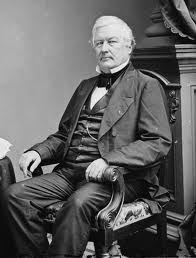
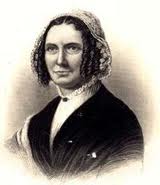
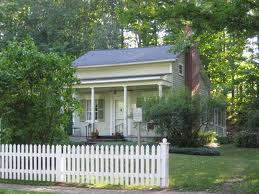
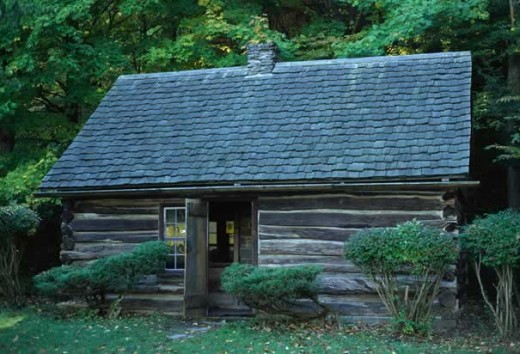
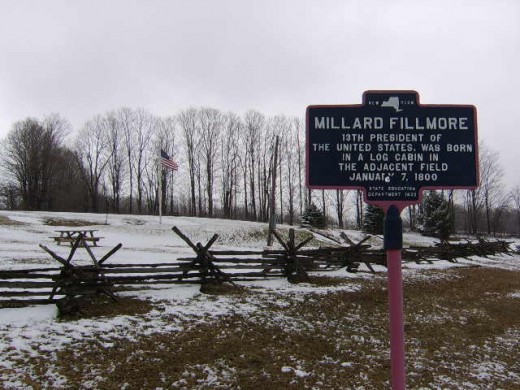
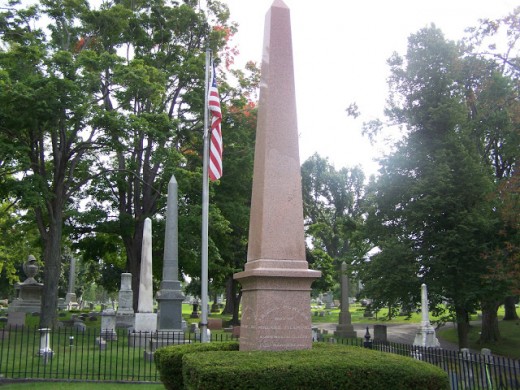
13. Millard Fillmore
Upon the Taylor's death, Vice-President Millard Fillmore assumed the presidency. A lawyer and Anti-Masonic / Whig party politician from New York, non-slave holding Fillmore had been selected as slave owner Taylor's running mate to balance the Whig ticket.
Unlike Taylor, Fillmore strongly supported Henry Clay's Compromise of 1850 and signed it when it reached his desk. While it was merely a temporary bandage on a festering wound, the Compromise did delay the Civil War for another ten years, although it angered northern abolitionists and blocked Fillmore's nomination for his own run at office in 1852.
Fillmore's establishment of trade and diplomatic relations with Japan was a highlight of his administration.
Millard Fillmore Birthplace
Where: Morovia, New York
When: Year-round
Cost: $10
The Historical Society also offers a $15 ticket that includes both Fillmore House and the Hubbard-Roycroft Museum
Born January 7, 1800, in a log cabin in Central New York to a poor farmer, Fillmore was the first U.S. President born in the 19th century and our country's first completely self-made president. He described his birthplace as "completely shut out from the enterprises of civilization and advancement." Because his father's farm could not support the entire family, Fillmore was hired out as a clothmaker's apprentice.
Despite the brutal apprenticeship, he managed to teach himself to read and borrowed the $30 that paid for his freedom. He walked 100 miles back to his family and began his first official schooling. Just two months older than 19-year-old Fillmore, his teacher Abigail Powers gave Millard the confidence he needed to succeed. After he obtained a clerkship to a local judge, he began to court her. They married in 1826.
While the original log cabin of his birth no longer stands, the Millard Fillmore Memorial Association rebuilt a similar cabin just five miles from the original site (which is commemorated with a historical marker). Built out of materials from another early nineteenth-century cabin, the replica is located in Fillmore Glen State Park.
In addition to the log cabin, the state park offers nearly 1,000 acres of lush wilderness, including five waterfalls, a campground, and a stone-walled swimming pool. If you are traveling through or near the Buffalo area, the state park and the log cabin would constitute a wonderful afternoon or day of swimming, hiking, and/or picnicking.
Fillmore House, East Aurora, New York
Where: East Aurora, New York
When: 1:00-4:00pm
June-October, every Wed., Sat. & Sun (special tours by arrangement)
Fillmore Gravesite, Buffalo, New York
Where: Forest Lawn Cemetery, Buffalo, New York
Fillmore built this 1-1/2 story home in 1825 for himself and his young wife. It was not originally in this location when the Fillmores lived in it. A subsequent owner had it moved to its current location in the 1930s.
Owned since 1975 by the Aurora Historical Society, the quaint one and one-half story home has been remodeled to the Fillmores' original floor plan, paint colors and interior design. Some interior doors and the bedroom floorboards are originals. In addition to period pieces from the 1830s, the house also contains some Fillmore possessions, including the president's bed, the family's piano and daughter's harp. Some furnishings from his White House days and later life in Buffalo (a demolished residence marked by a plaque on a downtown building) are here as well, including the glass-door walnut bookcase that was the first White House "library," a project of Abigail Fillmore's.
For those traveling near the Buffalo area, the Fillmore house would make a good one hour side trip. There are several independent restaurants in East Aurora for dining before or after your tour.
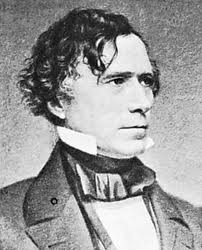
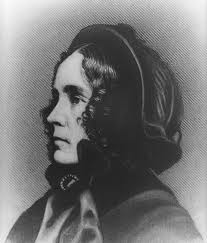

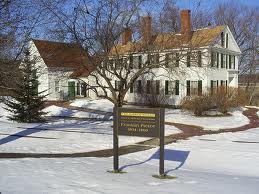
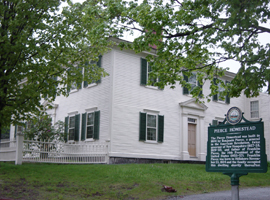
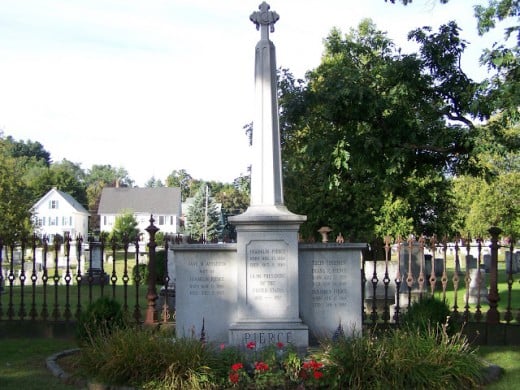
14. Franklin Pierce
Franklin Pierce began his presidency in the middle of family tragedy. The Pierces' only surviving child, 11-year-old Benny, was killed in a train wreck two months before the inauguration. The Pierce administration began in mourning, with no inaugural festivities.
As if cursed from the start, Pierce's presidency is regarded as one of the bigger failures among U.S. presidents. The Gadsen Purchase, which resulted in the acquisition New Mexico and some of Arizona, was fueled by Secretary of War Jefferson Davis' idea for a southern transcontinental railroad and by Senator Stephen Douglas' advocacy of a railroad running from Chicago to California. Douglas wanted to organize the western territories around the railroad lines and, in advocating this, supported the Kansas-Nebraska Act, which reopened the West to slavery by stating that residents of the territories could decide the slavery question for themselves.The Act resulted in both sides of the slave issue rushing to populate the Kansas territory and control it. Voting and elections were often rigged and/or violent. Localized, small-scale warfare continued until Pierce sent in the Army and appointed a new governor. Pierce's political career was completely broken. He was not renominated by the Democrats to run for a second term.
Pierce Birthplace, Pierce Homestead, Hillsborough, New Hampshire
Where: Hillsborough, New Hampshire
When: Daily, July 1- Sept. 1, 10:00am-4:00pm
Weekends Only, June, September, October
Cost: Free for New Hampshire residents
$3-$7 for non-residents
Franklin Pierce was born in 1804, the same year his father, Benjamin Pierce, built the Pierce Homestead. A Revolutionary War veteran from Massachusetts, Benjamin had bought an affordable log cabin and farm on 50 acres of land in Hillsborough. By the time he built the Homestead, he had become a prosperous, popular and prominent community member. Daniel Webster was counted as a family friend. In the 1820s, the elder Pierce served twice as governor of New Hampshire.
Because of his father's popularity, young Pierce grew up in a house built for entertaining. In addition to farming, Benjamin ran a tavern in the house. The Homestead features a second floor ballroom that runs the entire length of the house and doubled as drill space for the local militia.
The well-maintained home remained in the Pierce family until 1925, when it was sold to the State of New Hampshire. The Hillsborough Historical Society maintains the home, which is a solid example of New Hampshire homes of the era. With white clapboard siding and a hip roof, the exterior features centered, paneled doors and forest green shutters. Inside, much of the original, traditional wall stenciling survives. In the parlor, the original French wallpaper depicting scenes from Naples still adorns the walls, and vivid paint colors represent the decorating style of the era. Period furnishings complement the décor.
Franklin lived here through 1820, when he left for college to study law. He returned in 1827 and set up his first law practice across the road in an old shack. This was the same year that his father was first elected governor. Two years later, Franklin began his own political career, elected as a State Representative in the New Hampshire State House.
The grounds around the home are now part of a state park. Hillsborough itself is a worth a trip if you are traveling in New England. Featuring five stone arch masonry bridges, the village offers bed and breakfasts, motels and dining, along with beautiful lake vistas and outdoor recreation year round.
The Pierce Manse, Concord, New Hampshire
Where: Concord, New Hampshire
When: June-October
November-May by appointment
Cost: $3-$7
Special $15 family price
Pierce Family Gravesite
Where: Old North Cemetery, Concord
After spending much of the 1830s in Washington, DC, first as a representative then as a senator, Pierce married Jane Means in 1834. She disliked politics and Washington, DC, so Pierce retired from politics in 1842 and moved back to New Hampshire. They settled into what is called the Pierce Manse in Concord, and Franklin returned to practicing law. Like his father's home, this white clapboard, green-shuttered house with three tall chimneys is another fine example of New England architecture in the early 1800s. The home features a portrait of their son Benny, and many of the furnishings belonged to family members or were part of Pierce's White House possessions.
In 1846, Pierce left to serve in the Mexican American War. Upon his return, his name was put up for consideration for the 1852 Democratic ticket. After 48 rounds of voting, which eliminated all well-known candidates because of factional and sectional fighting, dark horse Pierce had the party's nomination, much to his wife's horror (she supposedly fainted upon hearing he had won the nomination).
After his term as president, Pierce and his wife, who had never recovered from the death of Benny, traveled to the Caribbean and the Mediterranean, where she clutched her late son's Bible and continued to fail physically. The couple lived in Massachusetts, where she died in 1863 from tuberculosis.
Pierce then returned to Concord. Without his wife, he became a reclusive alcoholic. According the Miller Center of the University of Virginia, the former president was derided for not supporting Lincoln's presidency. When Lincoln was assassinated in 1864, a violent mob formed outside of Pierce's home. It wasn't until he appeared at a window and mustered what was left of his old charm and oratory skill, that he convinced the mob to disperse.
The Pierce Manse was rescued from demolition in 1966 by a community group called the Pierce Brigade, which continues to manage the home museum. It was moved to its present location in 1971 and opened to the public in 1974. The Pierce Brigade settled on the name "Pierce Manse" to differentiate the home from the Pierce Homestead. Manse means a house occupied by the householder (owner).
Pierce, his wife and their three children are all buried at the Old North Cemetery in Concord.
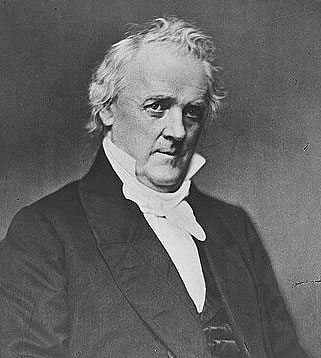

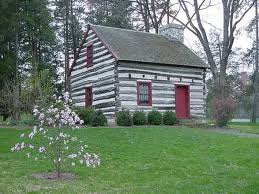

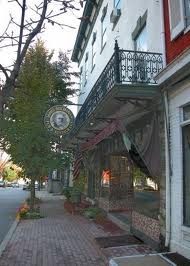
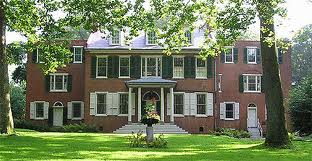
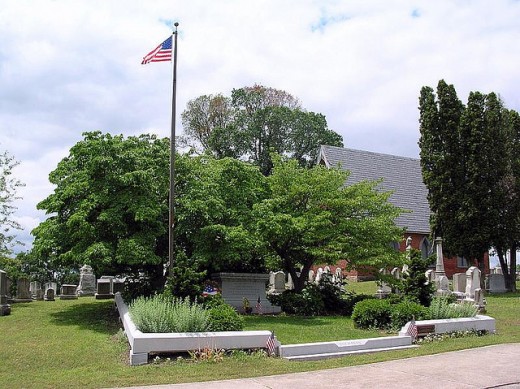
15. James Buchanan
Among scholars, James Buchanan's presidency is often rated dead last. Someone had to be president when the question of slavery, secession and states' rights finally blew the lid off the Union. Unfortunately for Buchanan, he was "it". According to these same scholars, Buchanan ranks behind John Quincy Adams and Franklin Roosevelt in being most prepared, through education and public service, to be president. He existed in the wrong place at the wrong time.
Mercersburg, Pennsylvania Childhood Homes
Birthplace Monument:
Where: Cove Gap, Pennsylania, Buchanan's Birthplace State Park
When: Year round
Birthplace Log Cabin:
Where: Mercersburg Academy, Mercersburg, Pennsylvania
When: Year round
Boyhood Home - Buchanan Hotel
Where: Mercersburg, Pennsylvania
Born in 1791 to a Pennsylvania merchant, the second of 11 children, James Buchanan spent the first six years of his life in the bustling trading town Cove Gap, the last post for pioneers heading west through the Allegheny Mountains. The Cove Gap cut through two of three parallel mountains, making it a popular route for those heading west from Pennsylvania and northeastern states. Buchanan's father was a smart and prosperous business man and ran a compound of cabins, barns, stables, a store, and a warehouse that he named Stony Batter, after their ancestral land in Ireland.
While the other buildings are long gone, the log cabin where Buchanan was born has been frequently moved by his descendants to protect it from vandalism. In 1953, it was moved for the last time to the campus of Mercersburg Academy, a private boarding school, and is included in the Walking Tour of Mercersburg.
In the cabin's original location sits a stone pyramid monument, funded by a bequest of Buchanan's niece Harriet Lane Johnston. Located in James Buchanan Birthplace State Park, the monument is surrounded by 18.5 acres of Tuscarora Mountains. The original pass, the Tuscarora Trail, passes just west of the park and feeds into the Appalachian Trail.
Around 1797, the Buchanan family moved their business to Mercersburg, where James' father built a large stone residence in town, featuring a store at street level and living quarters above. Buchanan lived here until 1816, when he left home for Dickinson College. While his father owned the property, the building was a two-story stone structure. Later, it was sold to J.O. Carson, then the McAffee Brothers. A third floor was added, and it, along with the residence, was converted into a hotel. Originally called Hotel Mercer, it is now the James Buchanan Hotel, Pub & Restaurant, featuring eight rooms open to overnight guests and a popular pub and upscale restaurant in the space that was once the Buchanans' store. The pub area still maintains the store's original tin ceilings.
The state park and nearby Mercersburg are located in Franklin County in central Pennsylvania near the Mason-Dixon line, separating West Virginia and the South from Pennsylvania and the North.
Wheatland - Official Residency
Where: Lancaster, Pennsylvania
When: Open year round, Tuesday through Saturday. Closed, Sundays, Mondays and all major holidays. Some seasons require appointments. Visit www.lancasterhistory.org for more information.
Cost: $4-$8.50
Buchanan Gravesite
Where: Woodward Hill Cemetery, Lancaster, Pennsylvania
After college, Buchanan started a law practice in Lancaster and became involved in the state Federalist party (which evolved into the Democratic Party), serving two terms as a state representative. He then served 10 years as a U.S. Congressman. In 1832, President Jackson appointed Buchanan as U.S. Minister to Russia. When he returned in 1833, he was elected to the U.S. Senate, an office he held for 10 years.
During this time, James' favorite sister, Jane, died, followed within two years by her husband, Elliot Lane. Two of their children, Harriet, 11, and Mary, 15, were left orphans. They opted to live with their Uncle James. So in 1841, lifelong bachelor Buchanan became guardian of his two nieces and sought to provide them with excellent educations and finishing school. While he was Secretary of State to Polk, during the late 1840s, Buchanan debuted Harriet to Washington society. When President Pierce appointed him to the pivotal post of U.S. Minister Plenipotentiary to the Court of St. James (i.e., Ambassador to Great Britain) in 1853, Harriet accompanied Buchanan to London. And when Buchanan was elected President in 1856, Harriet went to the White House with him as First Lady.
While Secretary of State, Buchanan negotiated the Oregon Treaty and established the 49th parallel as the U.S. northern boundary in the West. As Minister in London, he strengthened the relationship between the U.S. and the British and became a favorite of Queen Victoria. In recognition of this new, strong diplomatic relationship, the Queen sent the Prince of Wales to Washington to visit President Buchanan, the first time British royalty ever set foot in North America.This relationship was crucial in the Civil War years, when a British recognition of the Confederacy may have altered the outcome of the war.
In 1848, while Secretary of State, Buchanan bought Wheatland, an 1828 mansion in Lancaster, Pennsylvania, as well as its 22 acres of land and outbuildings. Buchanan retired here after his term as president. He loved the peace and quiet of Wheatland, both before, during and after his presidency. In fact, his presidential campaign was considered a "front-porch campaign" and was conducted from Wheatland.
The brick Federalist mansion is a 2-1/2 story home flanked by three wings and has a total of 17 rooms. Buchanan installed a furnace and central heating, replaced the open hearth in the kitchen with a cast-iron stove, and added such modern conveniences as a bathtub. On the grounds behind Wheatland, a privy, smokehouse, and carriage house remain standing. Today, the carriage house is used as the visitors' center.
After Buchanan's death in 1868, the property passed to Harriet. She used the home as a summer retreat and sold it in 1884 to George Willson, who had great respect for Buchanan's historical significance and did little to change the home, except to add electricity and indoor plumbing. Wheatland and 5-3/4 acres of the original land was eventually willed to the Lancaster Historical Society in 1934 by one of Willson's nieces.
Buchanan was buried in Woodward Hill Cemetery, Lancaster, PA. The location is considered the worst-maintained cemetery and burial site of the U.S. Presidents, according to commentary on presidentialgraves.com.
However, Wheatland offers a chance to see Buchanan's home very much like it was when he lived there. While some of the furnishings are period pieces, there are many authentic Buchanan possessions, including furniture, books and papers, especially in his library.
For any person or family traveling in the Lancaster area, a trip to Wheatland is well worth a couple hours of your time. The Wheatland volunteers are rated highly by Yahoo and Google visitors, and the home and grounds will not disappoint.
Millard Fillmore birthplace.
Read the Others in the Series
- Harriet Lane: First to be Called "First Lady"
A short biography of Harriet Lane, niece of President James Buchanan and our first iconic First Lady. - Homes of the U.S. Presidents, Part 4: Abraham Lincol...
Offering visitor information and descriptions of Abraham Lincoln homes in Kentucky, Indiana, Illinois and Washington, DC.--including birthplace, boyhood home, law office and more.

